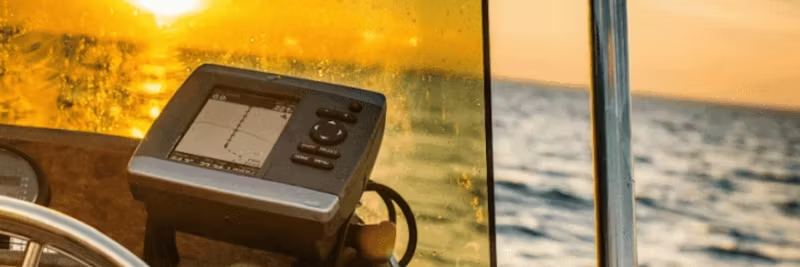Cart
Discount: 0.00 DKK
Discount: 0.00 DKK
Digital Skipper |2/11, 2023

GPS and GNSS satellites are used to provide a precise location of a person or object almost anywhere on Earth; the earth. The process of how GPS/GNSS works and uses trilateration to determine a location.
Trilateration is mainly used in surveying and navigation, including global navigation satellite systems (GNSS) such as Galileo and GPS.
There are four main ways GPS data can be used på:
These can be used in the marine industry and your NMEA 0183 or NMEA 2000 GPS instruments, which then är connected to other devices. Of course, we all understand that the GPS fix will show the current location of the device. an MFD or connected PC application... but how can we use GPS with other devices?
In general, an Autopilot connected to a GPS is much more accurate than one connected to a compass. The direction of the compass keeps the wind pointed in one direction, but does not take into account changes such as wind. Using a GPS means that the autopilot stays on; course (with the help of cross correction), which improves travel time and reduces fuel consumption. This is achieved by the autopilot adjusting the driver's direction to keep the ship on course; cross alignment while compensating for various conditions that require compensation.
VHF radio is an excellent piece of equipment to have on board, especially considering; safety at sea. VHF radios support DSC (Digital Selective Calling), which allows distress signals to be sent to the Coast Guard and other nearby vessels. It is also possible; communication between you and other ships equipped with DSC.
The benefit of connecting GPS to VHF can very well be a life saver. If your ship unfortunately goes aground; ground or begins to sink, the first thing you should do is contact the Coast Guard. If you send out a distress signal with connected GPS, your location will automatically be included in the information sent to the Coast Guard and other nearby vessels. It enables a fast and accurate position for your vessel and greatly reduces the time it takes to respond to; the incident.

GPS connection is essential when using under AIS. The idea of AIS is to indicate the target's (other ship's) location in relation to your own. This allows MFDs, etc., to warn of potential collisions if both vessels continue on course; same course.
We can alsoå få your NMEA 0183 or NMEA 2000 data to a PC or connected chart application using gateways. To get NMEA 0183 data to a PC application like Open CPN can be done via an Actisense USG-2 if the data is already NMEA 0183. If your data is NMEA 2000 and you want to bring it to your PC for an application like TimeZero, this can be done with the help of an NGX-1 or NGT-1.
The NGX-1 can also; used to convert your NMEA 2000 GPS data to NMEA 0183 GPS data and then fed to your PC application via USB if NGX-1-USB is used, or via serial / DB-9 / USG-2 connection if an NGX-1 ISO is used.
Of course you can have several of the above devices on board, all of which would benefit from a GPS data feed. Instead of individually connecting each device to GPS, a NMEA buffer like the PRO-NBF-1 or PRO-BUF-2 can help direct and spread that GPS signal, allowing all connected devices can use GPS batch data required... a much more user-friendly and More wallet-friendly solution.
In summary, we can use GPS for a number of different things when we are out and about; the water, from navigation to helping with safety. Most ships have a GPS on board, but it may not be used to its full extent. If it is there, why not use it on; all the ways you can to make your systems smarter, safer and more efficient?
Note: Check the manufacturer documents to see if your autopilot, VHF, etc ., accepts input from the GPS and whatever format it takes, as it will determine whether you requires NMEA 2000 or NMEA 0183. Always test your installation before proceeding; a trip to make sure your equipment is working properly. Any concerns or questions should be raised with the manufacturer or a certified NMEA installer.